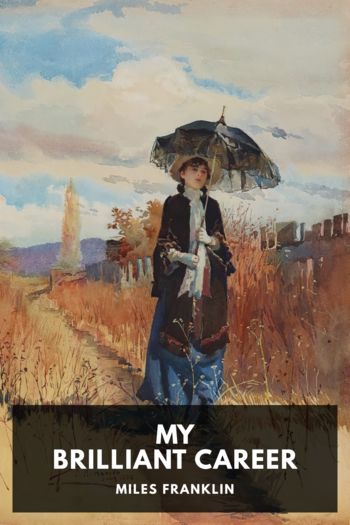Master of His Fate by James Tobin (books to read for teens .TXT) 📕

Read free book «Master of His Fate by James Tobin (books to read for teens .TXT) 📕» - read online or download for free at americanlibrarybooks.com
- Author: James Tobin
Read book online «Master of His Fate by James Tobin (books to read for teens .TXT) 📕». Author - James Tobin
FDR knew all this and had signed on as a loyal Smith man for 1928. But that was for public consumption. His private calculations were a little more complicated.
When FDR and Howe studied the chessboard in 1926, they considered three possible strategies:
Strategy #1: FDR could run for president right away, in 1928, leaping over the stepping-stone of statewide office. After all, a lot of Democrats back in 1924 had told Roosevelt they would back him the next time around.
But this strategy would be terribly risky. Since 1920, FDR had built a reputation as a Smith man. If he challenged Smith for the 1928 nomination, not only would he be likely to lose, but also he would brand himself as a turncoat against the party’s leader.
(Actually, there was one narrow path to the 1928 nomination. If the Democrats got locked in a civil war like the one they’d fought in 1924, with the “wet” forces, who wanted to get rid of Prohibition, against the “dry” forces, who wanted to keep it, Smith might be pushed out of the running. If that happened, Louis Howe wrote in a confidential note, then FDR stood an “excellent chance … of being at least one of—if not the one—among the leaders who all turned to.” But in 1926 Smith looked so strong that this was only a long shot—very long.)
Strategy #2: FDR could run for the U.S. Senate in 1926, challenging the Republican who then held the seat, James Walcott Wadsworth. If FDR won, the statewide victory would boost his prestige and his national profile, and he could bide his time in the Senate, waiting for the best year to run for president.
But the Senate strategy had its dangers, too. New Yorkers had already elected Senator Wadsworth twice. If FDR challenged him and lost, how could he run for president after that? Then there was this: A seat in the U.S. Senate offered prestige, yes, but for a politician whose ultimate aim was the White House, it was a place of peril. This is why: As a senator, FDR would have to vote on major national policies. The Democrats were split between progressives in the cities and conservatives in the countryside. On any major measure, a “yes” vote would make enemies in one faction, while a “no” vote would make enemies in the other. FDR wanted as few enemies as possible. Anyway, it was hard for a newcomer to make a mark in the Senate, with only one vote out of 96 and no seniority.
And, of course, if he ran for office now, in 1926, there was the problem of campaigning with braces, canes, and crutches. His legs weren’t ready.
Strategy #3: Prepare for the right year to run for governor of New York.
This strategy had many advantages.
FDR loved the state of New York and liked the idea of being its leader.
He was a born executive, not a legislator. He wanted to be the one in charge.
He knew the governorship could be a stepping-stone to the White House, as it had been for Uncle Ted.
And FDR wanted not just to be president but to be a great president. He needed experience, and he knew it.
You could look at it as a simple matter of odds—of statistical probabilities—which Louis Howe had been calculating since his days around the horse-racing tracks of Saratoga Springs.
These were the numbers:
Since the Civil War, the Democratic Party had nominated thirteen men for president. Of those thirteen, seven had been New Yorkers, and three of those men had been governor. One, his father’s friend Grover Cleveland, had been elected president in two different years, 1884 and 1892. The Republicans had nominated two New York governors for president, and one of them—Uncle Ted—had reached the White House. (He’d succeeded to the presidency when President William McKinley was assassinated in 1901, but he’d been elected in his own right in 1904.)
New York, with 10 percent of the U.S. population and 17 percent of the electoral votes needed to win the presidency, was the biggest state in the Union by far. If you could run the government of New York, with its gigantic metropolis and its sprawling reaches of upstate farm country, it was pretty clear you could run the government of the whole country.
Anyone who hopes to be president faces long odds. But a smart gambler would look favorably upon any governor of New York.
When to run? The next election year, 1928, looked promising. If Smith won the White House in that year and FDR became governor, FDR could build a strong record as chief executive of the Empire State and run for president in 1932 or 1936.
And if Smith lost in 1928, he would likely be finished as a national candidate and out of FDR’s way for good.
So at this point, Strategy #3 looked like the right one.
If he could walk.
A friend in the Democratic Party—a wealthy upstate New York brewer named Louis B. Wehle—had recently written to FDR about the political outlook in strictest confidence.
Wehle said he knew FDR would be supporting Governor Smith for the nomination in 1928. But he asked FDR to permit “your friends … to organize the situation in your behalf in the event that Smith should not receive the nomination.”
Between the lines, FDR could read Wehle’s intentions. His friend wanted to spread the word—very quietly—that FDR was ready to step in if Smith’s momentum toward the nomination could be blocked.
But FDR wrote





Comments (0)